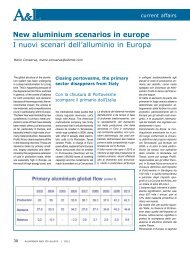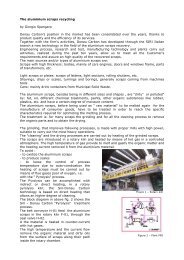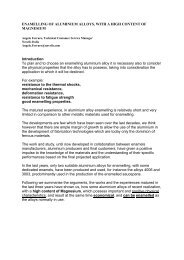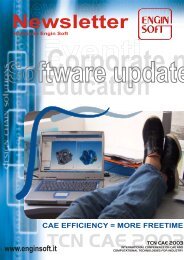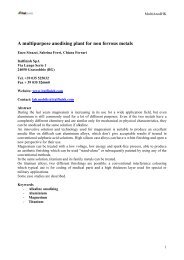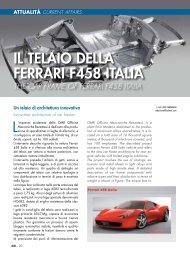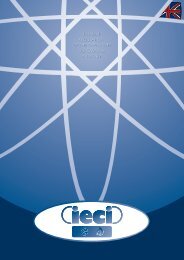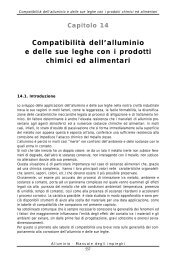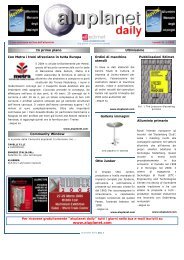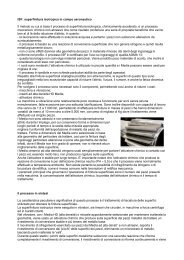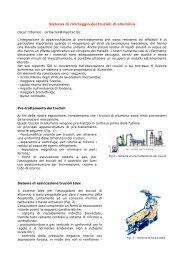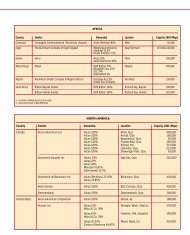ECOLOGICAL PREPAINT TREATMENT OF ALUMINIUM ... - Aluplanet
ECOLOGICAL PREPAINT TREATMENT OF ALUMINIUM ... - Aluplanet
ECOLOGICAL PREPAINT TREATMENT OF ALUMINIUM ... - Aluplanet
Create successful ePaper yourself
Turn your PDF publications into a flip-book with our unique Google optimized e-Paper software.
CFP alloy variation<br />
Neutral salt spray at 4000 hour exposure<br />
Type<br />
A1<br />
B1<br />
C1<br />
Alloy<br />
Al 6061<br />
Al 5052<br />
Al 2024<br />
Paint type<br />
Polyester<br />
Interpon<br />
D1036<br />
Polyest er<br />
Interpon<br />
D1 036<br />
Polyester<br />
Interpon<br />
D1036<br />
Paint<br />
thickness<br />
Nominal 70 microns<br />
Creep back<br />
mm<br />
0<br />
0<br />
0<br />
Rating<br />
ASTM 1654<br />
10<br />
10<br />
10<br />
Slide 12: alloy variation<br />
Enhanced Process<br />
To achieve optimum paint performance on aluminium alloys, quality assure in-service<br />
reliability and meet the needs of demanding corrosive environments, a more extensive<br />
prepaint treatment prior to CFP has found to be beneficial, as outlined on slide 13.<br />
The enhanced sequence starts with a non-etch BioChemical alkaline cleaner as the preferred<br />
choice for surface oil removal, followed by water rinsing. This is shown on the slide optimized<br />
with the use of a BioFilter to extend performance and solution life, which is available to<br />
applicators as an option. Etching is then required to active the surface. Experience has shown<br />
that an acidic etch produces a more uniform substrate profile which is highly compatible with<br />
passivation.<br />
After etching, surface smuts may be generated which tend to be heavier the more highly<br />
alloyed the substrate type, smuts are particularly heavy on copper based alloys. They mainly<br />
consist of oxides and intermetallics which are readily removed by a suitably formulated acid<br />
treatment. Following smut removal, double water rinsing is recommended prior to passivation.<br />
Some instances have found that final finish improvements can be realized when using<br />
deionized water in the second stage rinse, but it is always recommended to use deionized<br />
water after passivation. This process route can be used effectively for both spray and<br />
immersion, and for both wrought and cast aluminium alloys.<br />
Enhanced Process<br />
Spray Zones<br />
BioChemical<br />
Clean<br />
Water Rinse<br />
Acidic Etch<br />
Water Rinse<br />
Desmutt<br />
Water Rinse<br />
Chromium-free<br />
passivation<br />
Slide 13: enhanced prepaint process



